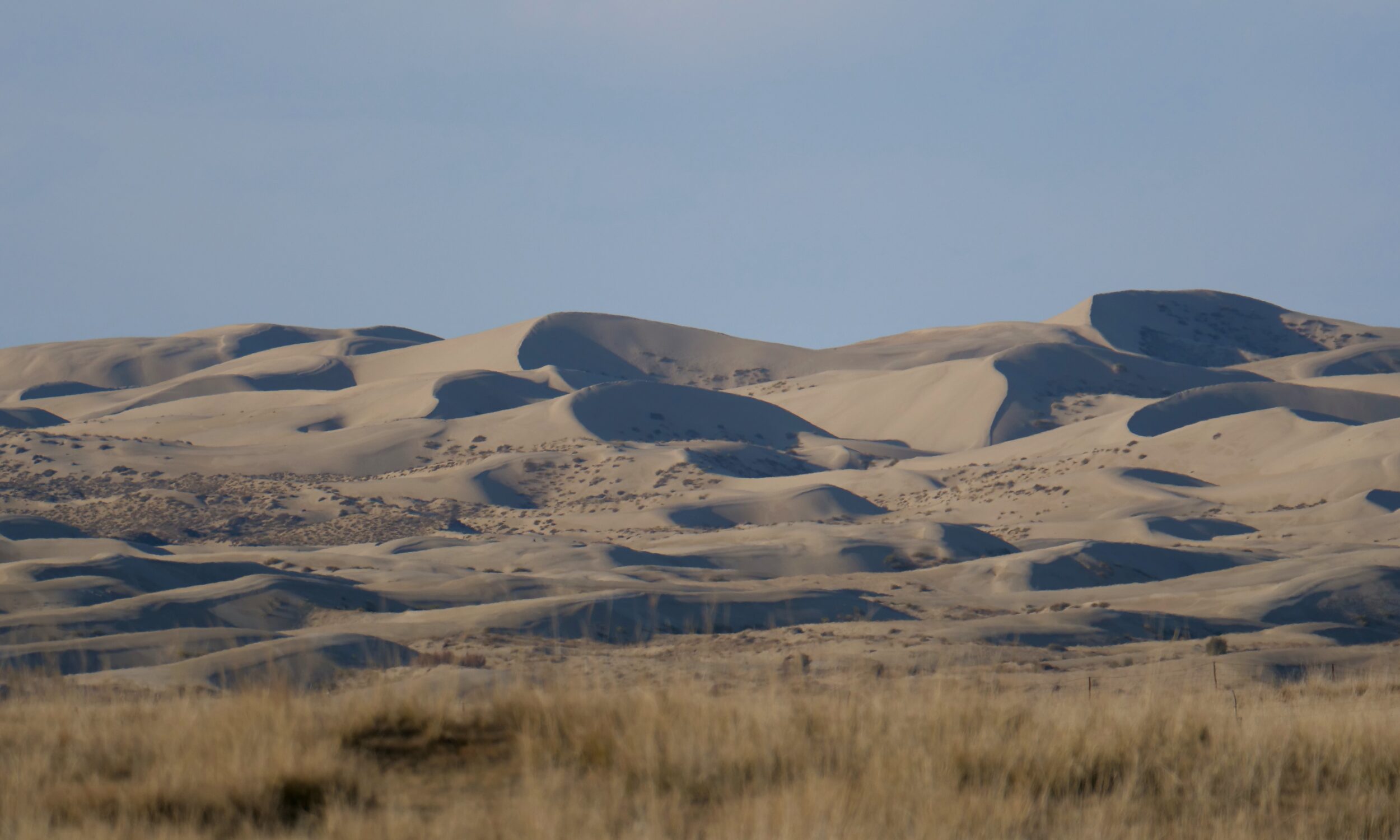This post’s featured image is far from great, but it does show a particularly surprising place.
I took the photo through “our” vehicle’s tinted window, as we zoomed past the pictured dunes at 5.09 pm on 22 October 2019.
Nearby, was a very large, salty lake.
The nearest ocean shore was circa 1500 kilometres distant, in a straight line.
No “straight line” transport connects to that shore; reaching the nearest ocean beach would require an arduous one-way journey of circa 2,000 kilometres.
Unsurprisingly, this particular vicinity is sparsely populated.
However, when I took the photo we were just 100 or so kilometres distant from a metropolis which is home to at least two million people; we would reach it before nightfall.
Q: where in Africa were we?
A: we were not in Africa.
The pictured dunes are near to China’s largest lake, which sits on a huge plateau.
That lake sits in a big hollow/basin.
Qinghai Lake is a low place…in Tibetan Plateau terms.
The lake’s surface sits a deal more than 1,000 metres lower than the Tibetan Plateau’s average altitude, as do the pictured dunes.
Still, at that moment, near the eastern edge of “the roof of the world”, we, the lake and the dunes were all more than 3,260 metres – 10,700 feet – above sea level; Mt Kosciuzko’s not-so-mighty peak reaches 2,228 metres – 7. 310 feet.
We were a long way from Lhasa – and not even within what China’s rulers wish the world to regard as “Tibet”.
In truth, the greater portion of the actual Tibetan Plateau sits outside the faux/minimised “Tibet”; the actual Tibetan Plateau extends into several other of China’s provinces.
Qinghai Province – geographically, China’s largest – contains more of the Tibetan Plateau than does the faux “Tibet”.
Qinghai is also home to the larger number of Tibetan humans.
Lhasa – the faux-Tibet’s one big city – sits on a relatively low part of the Tibetan Plateau; contrary to general global belief, Lhasa is not the world’s highest major city.
(South America has some considerably more elevated metropolises , and the world has many “higher” towns, on the Tibetan Plateau and far distant from it)
On the night of 22.10.2019 we would sleep in Xining.
Qinghai’s capital city is much bigger than Lhasa, and Xining is very much the “gateway” to the Tibetan Plateau, and is the “big smoke” for most who live on the Plateau.
Xining is often, wrongly, labelled as “the biggest city on the Tibetan Plateau”.
The city sits adjacent to – and below – the Tibetan Plateau’s rim, at a relatively modest, ”Mt Kosciuzko-esque” altitude..
Xining is much more the Tibetan Plateau’s commercial hub than is Lhasa.
Still, Lhasa is on the Plateau.
Xining is not.
Arguably, Sydney is Katoomba’s actual commercial hub, but that does not make Sydney a “city in the Blue Mountains”.
This series’ next chapter comes with a “100% rant-free” guarantee!
It also stars high-altitude dunes – very different, amazing ones – and rather better photography.
Footnote
The Tibetan Plateau is now in “big trouble”, but is still utterly awe-inspiring.
Pelican Yoga has more than a few Tibetan Plateau posts
This link will take you to some..and there will be more, eventually.
